#DelosYourself and Ease Your Low Back Pain
When I was little, my greatest impression of old people was that they said things like, “Oof, my aching back,” or grabbed their lower back while wincing after getting up from a seated position.
And then, this past week I helped my sister move into her new Chicago apartment, a task that included carrying many heavy, awkwardly-sized boxes and hunching on the floor to put together furniture. I woke up the morning with an aching lower back and realized, oh crap, I’m one of these old people.
I’m not alone. According to the National Institute of Neurological Disorders and Stroke, about 80 percent of adults experience low back pain at some point in their lives, and more than 25 percent of people surveyed had experienced it in the past three months. Combined, these stats mean that low back pain is the most common cause of job-related disability and a major contributor to missed work days.
That makes sense, according to Eric Owens of Delos Therapy, who says they treat people for low back pain more than almost any other pain or injury (second only to tight necks and upper shoulders).
What causes low back pain?
Owens tells us that the most common cause of low back pain is chronically tight muscles in the lumbar paraspinals. These muscles, also known as the erector spinae, run from the bottom of your spine all the way up to the cervical portion that supports your head and neck. Tightness in the erector spinae can cause pain allllll up and down your back, whether it’s in your lumbar spine, your thoracic spine, or your cervical spine — because it’s all the same muscle tissue.
“The erector spinae is really long, the entire length of your spine, ” Owens illustrates. “Tight muscle tissue can pull up top and cause headaches or tension migraines, or the tissue can pull down low and cause low back pain.”
In addition to the erector spinae, tight muscle tissue in adjacent muscles and areas can pull on the low back. Owens points to your posterior hips and gluteus medius as two major culprits, with hip flexors and psoas potentially playing a role as well.
What causes all that tight muscle tissue?
Easy, says Owens: wear and tear over years and years.
Think about it this way: throughout your life, your lower back is one of the first things you start to engage through movement, from your first minutes of tummy time as an infant all the way up to picking up a moving box as an adult.
“By the time you’re 40, when people start having low back pain, that’s decades of wear and tear into those muscles. That wear and tear causes muscles to be tight, densely packed with collagen, and rock hard,” explains Owens.
Owens goes on to explain that people don’t realize what causes that tightness, so they do stretches, yoga, and other movements that are traditionally expected to relieve low back pain.
Unfortunately, those stretches only improve muscle tissue that’s already pliable, rather than loosening up any tightness that’s already developed.
Specifically, though, that wear and tear comes from a combination of things that engage your low back: exercise, being sedentary, and general life stuff, whether it’s carrying groceries or giving a piggyback ride to a kid.
Are there any exercises I can do to strengthen my core and relieve low back pain?
It’s a complicated answer, according to Owens.
“People think their low back hurts because their core is weak,” Owens shares. “And yes, if you strengthen your core, it can make your low back feel better.”
But — there’s a but. It’s all about the percentage of pliable muscle tissue versus tight muscle tissue.
Here’s an example: if a patient has 60 percent pliable muscle tissue and 40 percent tight muscle tissue, core strengthening exercises will strengthen that 60 percent pliable muscle. And yes, that does help because that loose, pliable tissue will be able to carry a heavier load because it’s stronger. Boom! You feel better, problem solved. Right?
Not so fast, Owens cautions. Eventually, the ratio flips and there’s more tight muscle tissue than pliable — that’s when strengthening the core starts to hurt the low back.
“If you’re doing low back exercises, that masks the tightness,” Owens shares. “If you stop doing them, the low back pain reveals itself. Either way, you haven’t actually addressed the underlying cause of the pain.”
“I don’t want people to become dependent on exercise,” Owens continues. “I want them to address the muscle pliability and then strengthen the muscles.”
How long will it take for Delos to treat low back pain?
Four weeks generally will get back you back to normal, says Owens.
One caution: if you experience any numbness, tingling, or shooting pain down the leg, you should get an MRI to rule out any structural problems. However, an MRI doesn’t reveal muscle tightness, and the numbness, tingling, and shooting pain could still be caused by muscle tightness though. That’s because tight muscles around the vertebrae can compress discs and ultimately crush the disc to cause a bulge (anyone else cringe just reading that sentence?). Loosening up muscle tissue around the vertebrae with treatment like Delos can create space around the disc.
How does Delos treat low back pain?
The first plan of attack? Owens goes in for the lumbar spine.
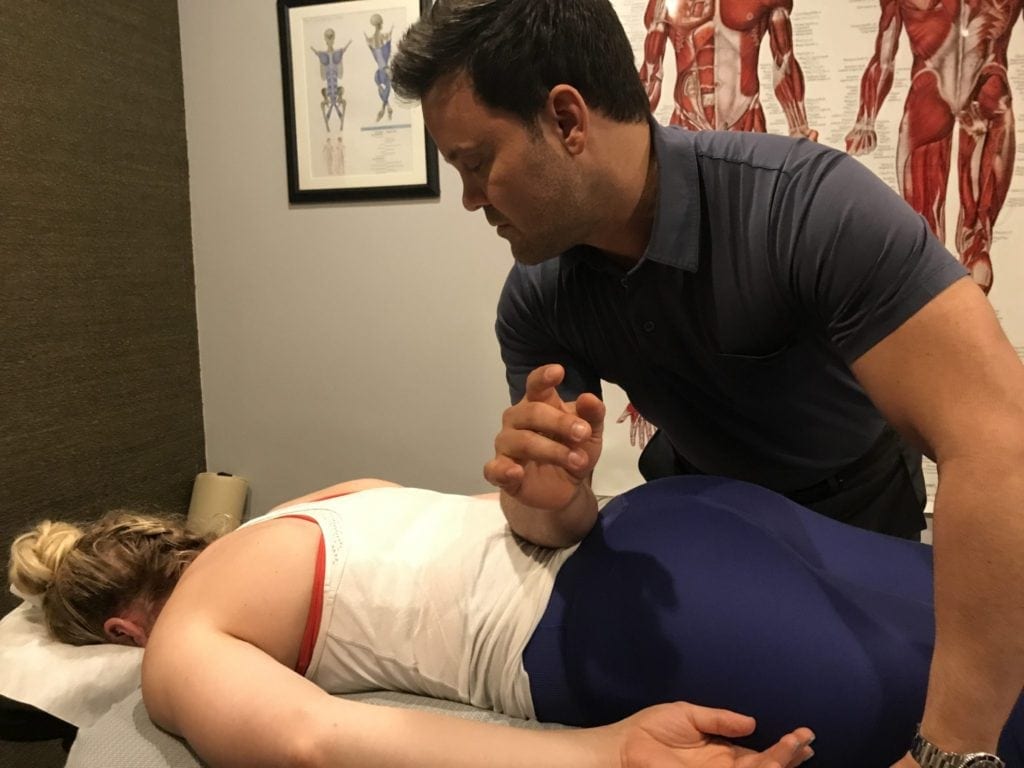
Next, he moves down slightly to the gluteus medius.
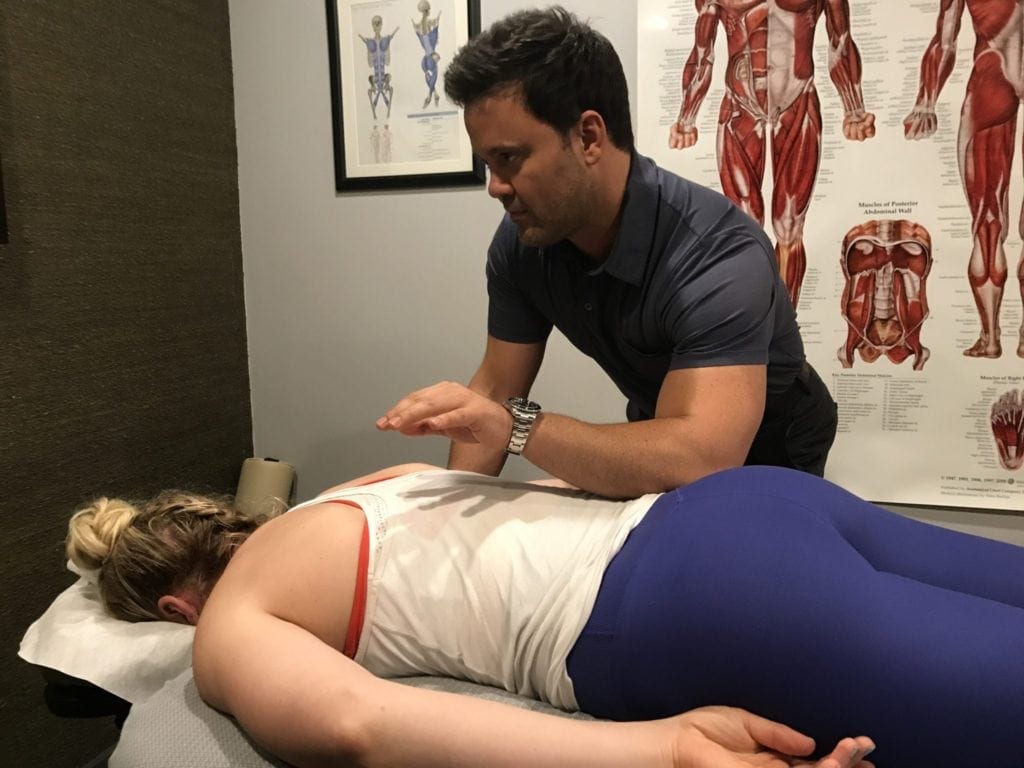
From there, Owens works his way around to lateral hips, hip flexors, and abdominals, explaining how that treatment pattern creates the balance that you want around the core.
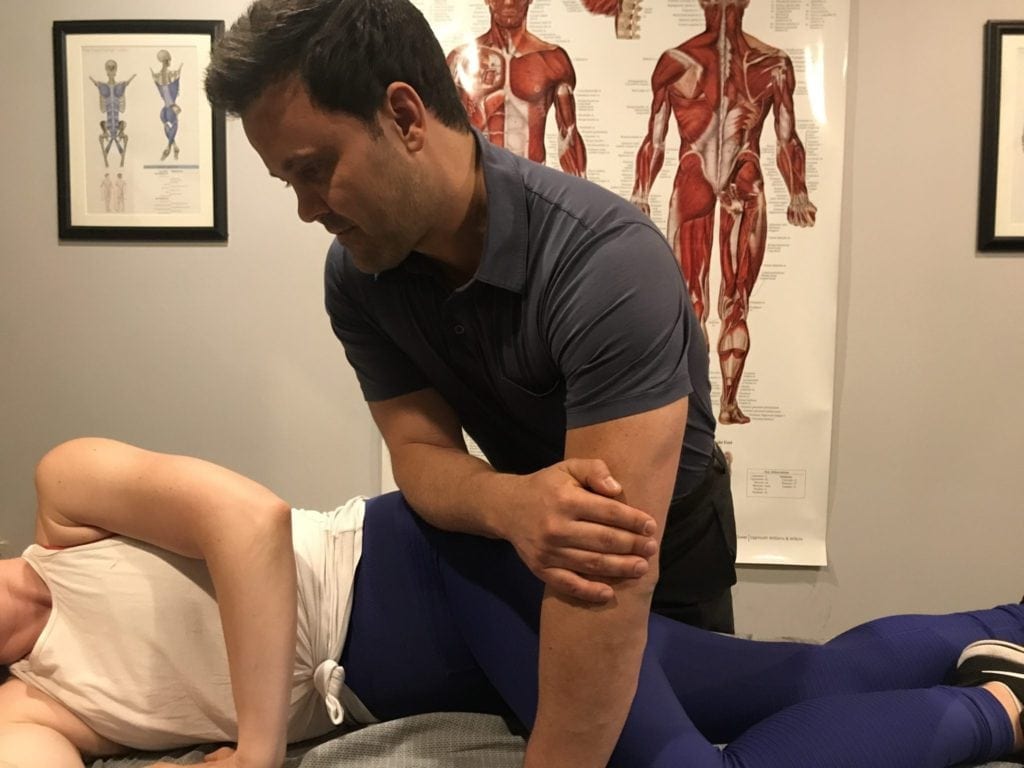
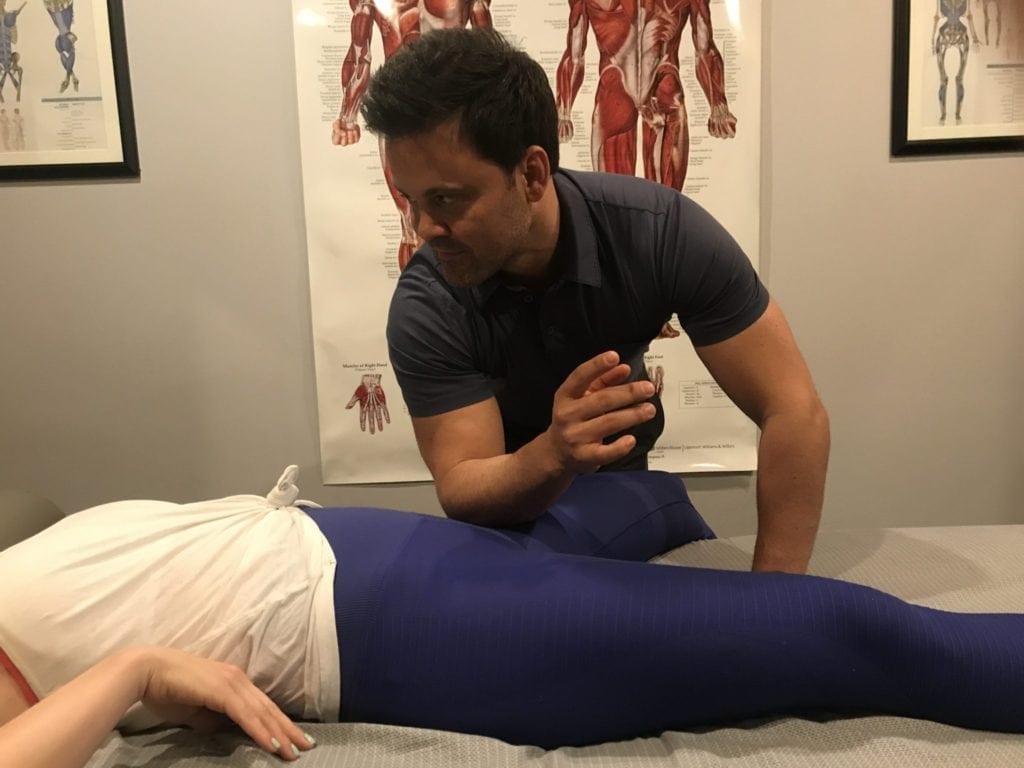
Your Delos therapist will likely have you dangle one leg off the side of the table to get a “pre-stretch,” which means your muscles are stretching two ways. First, they’re lengthening (that’s the dangle); then, they’re stretching down as Owens applies pressure to improve the muscle pliability.
How to #DelosYourself and treat low back pain
Grab your Theracane and either a lacrosse ball or a Knobble if you’ve got one — you’ll be using both to apply pressure and break up the tight muscle tissue.
You’ve got two options for hitting that lumbar muscle tissue — upright in a chair, or laying on your back. Either way, you’re using the rounded end of the cane to leverage pressure into the muscles.
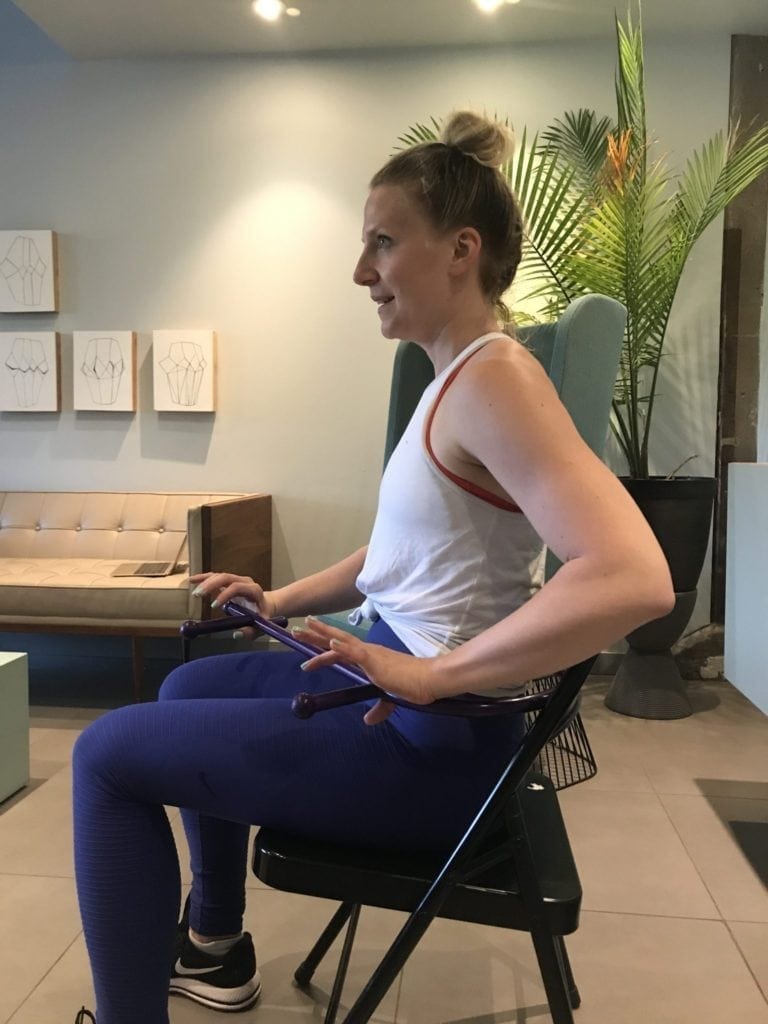

Got a Knobble or a lacrosse ball? That works too — breathe deeply and hold for 30 seconds.

When you’ve had your fill of “hurts so good,” transition to your side and get into those lateral hips with the Knobble or your lacrosse ball.

From there, lay on your back and use your tool of choice to loosen up your hips, hip flexors, psoas, and abdominals.
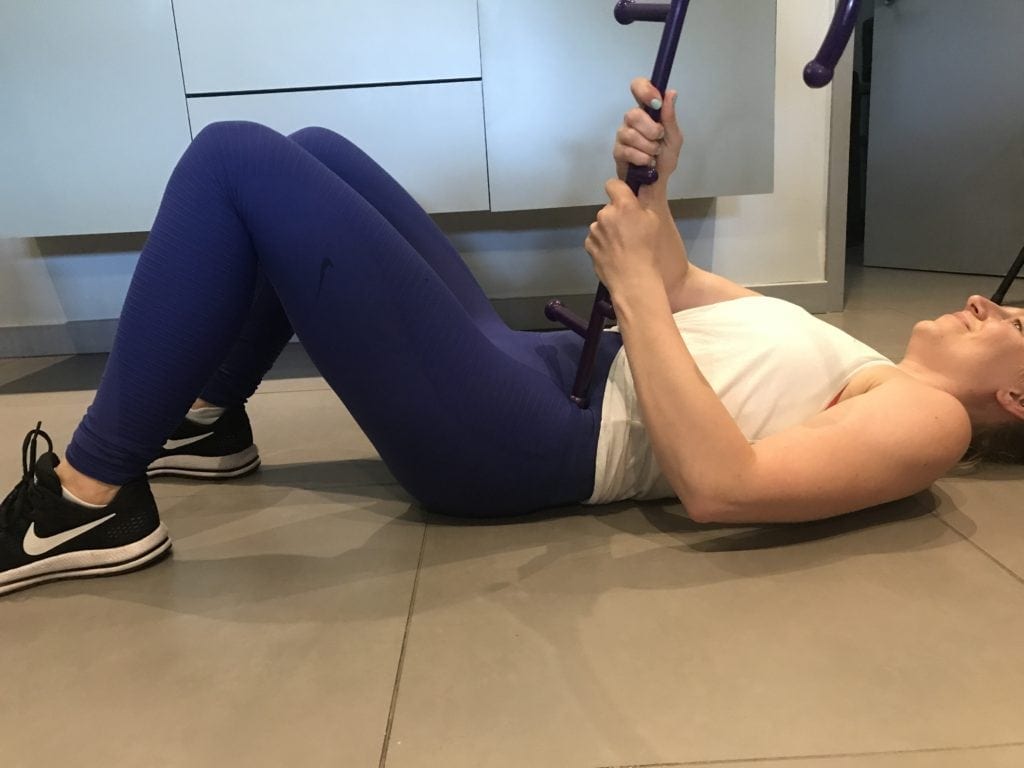
Bonus points if you get that extra pre-stretch by either dangling or full extending your leg on that side.
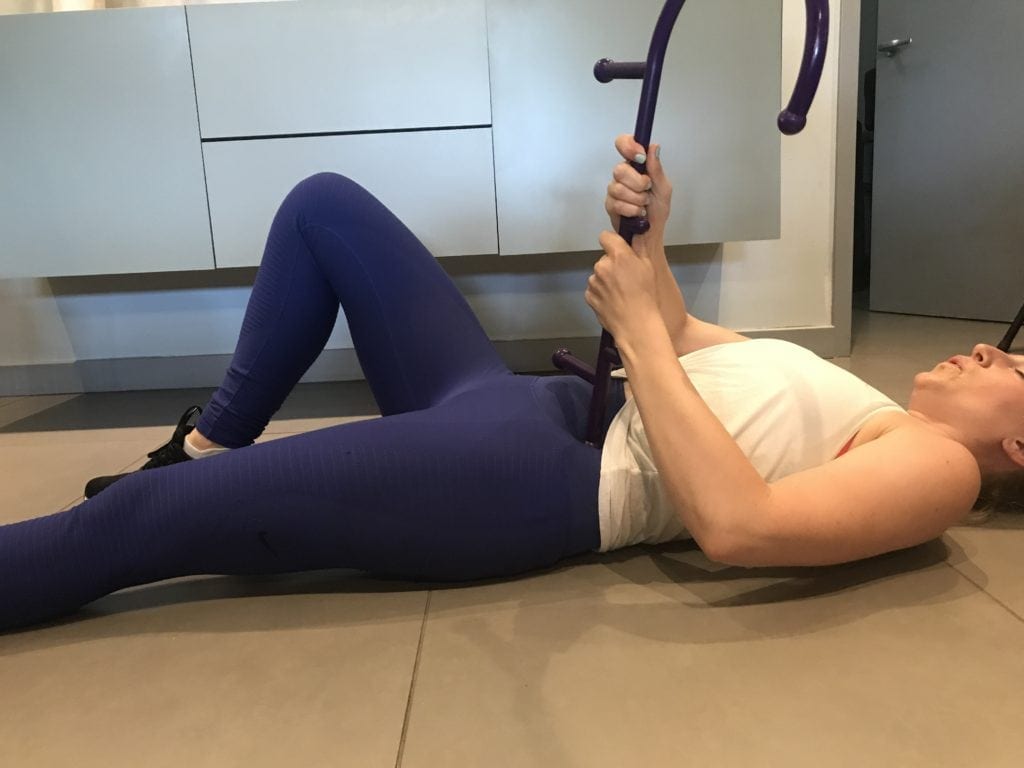
Finally, still on your back and starting with your lower abdominals, apply pressure with the bottom of the Theracane, gradually moving up to your mid and upper abs.

If you’re experiencing low back pain, head to Delos for a complimentary 20-minute evaluation. As for me? I’ll be insisting my sister hire movers next time.












